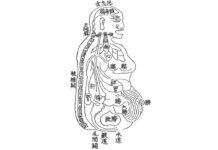Winston Lee L. Ac, Ph.D, KMD
The era that a doctor clears up to his patient about treatment as short as Advil instruction is over. In the past, it was acceptable for a doctor to explain his patient the brief information about the surgery and patient was supposed to sign on thousand pages without knowing the aftermath or side effects of the procedure.
However, the thing has been changed. Patients are expecting to have more detailed information about the treatment these days – the total period of treatment, what if the initial treatment is not working, plan B strategy if it does not work, detailed side effect of the treatment, the worst scenario and the total cost.
First, we should provide the patient some information of the treatment period. Actually, patients are most curious about this one. Because this information is directly related with patient’s time and cost.
Not many people are able to have plenty of sick days without asking a favor to their supervisor. Most of dad and mom need to pick up and drop off their kids on regular basis. Everything has its own limit.
The next is to inform the patient the frequency and duration and method of treatment in the beginning. It is not enough to convince the patient that the doctor will treat the patient with one method for several months. The method and frequency can be various, and it depends on the patient’s current condition.
For example, he or she is going to take treatments three times a week in the initial intensive treatment period. When the pain level decreases than the beginning, the frequency could be reduced as much as twice a week. The method should be flexible as well and it should be informed to patient in advance. To address acute and severe pain, a doctor can use treatment A.
But when the pain goes down to moderate level in few weeks, treatment B will be applied to patient to strengthen the ligament and tendon. It has a huge difference between changing the plan – including frequency or method – without letting the patient to know it before and informing them with a kind and friendly manner. You can understand this when you got some sting pain just after your dentist says like this. “Sorry, you will have a little pain now.” You are Okay because the dentist tells you in advance.
Last but not least is the ‘pain level’. You should make it clear about the expected pain level after initial treatment period. If today’s pain level is 8 out of 10, you should tell the patient that it would be 2 or zero after several weeks or months.
Unfortunately, most of patients consider the definition of ending of treatment as reaching pain level zero and never happening again. Physicians should inform the patient the expected goal of pain level clearly at initial visit based on doctor’s own medical experience. It is almost impossible for a doctor to treat severe degenerative disc disease patient in several weeks to reach absolute zero level of pain. Likewise, it would make no problem to anticipate the treatment period as 2 or 3 weeks for simple ankle sprain without any bone fracture.
Suppose we have a case like this. A patient in his early 40’s has a severe and acute pain on his back and the patient has sciatica and radiating pain on the right hip through thigh. It has been 2 weeks since he got this pain and he took an MRI last week. The MRI shows 5 mm intervertebral disc protrusion at L4 and L5. Upon physical examination, a doctor took SLR(Straight Leg Raising) test and he has pain at 60 degree on right leg. There are no ankle weakness and sensation loss on legs. Pain has been reduced by 20 percent than 2 weeks ago, but patient is not able to work well due to the unbearable pain.
In this case, it is not considered as a surgery case because he does not have ankle weakness neither sensation loss. Prognosis is rather positive since he has only one disc protrusion and other discs are fine.
Total treatment period is 3 months and 80% of recovery in VAS is expected. In order to control the pain and make balance of the spine, the patient needs to be recommended as taking sessions of acupuncture and chiropractic treatments at least twice a week on regular basis. Also, herbal medicine should be prescribed to reduce inflammation at pinched spinal nerve which is generated from irregular friction between nerve and herniated disc.
Plus this herbal medicine is helpful to regenerate the damaged nerve. Patient needs to take this medicine twice a day for three months.
Based on statistics, 80% of patients will see the recovery of VAS 5 from 10 in the first month. The VAS will be 3 at the end of the second month. If the VAS is still 8 or 9, steroid injection is to be considered to reduce inflammation instantly. In very rare cases, traditional open surgery can be considered if the pain level is still as high as the beginning. Nevertheless, the recovery rate after surgery is faster than control group because the patient has already taken herbal medicine to strengthen the supporting muscle and ligament so far.
It is important to make a prompt improvement, but it is also necessary to explain treatment goal and plan A, B and C to patient fully before starting as described above. Communication is everything. With good communication, doctors and patients both can be happy with any situation.































